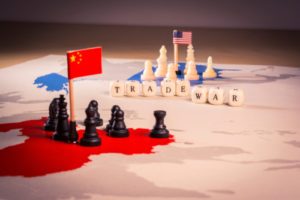Why US-China trade peace may not last

President Trump’s optimistic handshake with Xi Jinping at a South Korean air base last week sent global markets soaring and the yuan to near one-year highs.
ihc-hide-content ihc_mb_type=”show” ihc_mb_who=”1,2,3,5,6,7″ ihc_mb_template=”3″]
But beneath the diplomatic smiles lies a maritime trade war that experts warn could reignite within months, reshaping global shipping routes and supply chains.
While Trump promises tariff reductions in exchange for Beijing curbing fentanyl precursor chemicals, the underlying structural tensions remain explosive. Chinese ports currently handle cargo volumes six to eight times greater than their American counterparts, giving Beijing enormous leverage.
Washington’s proposed docking fee regime represents the real flashpoint. Under consideration are penalties up to US$1 million per vessel entrance for ships built in Chinese yards.
This would hit global shipping giants hardest, MSC faces potential annual fees exceeding $2 billion, Maersk $1.2 billion, and CMA CGM nearly $1.3 billion. The fees target the reality that major operators increasingly rely on Chinese-built vessels, which dominate global shipbuilding capacity.
The maritime industry has already felt the shock. Over 80 blank sailings canceled trans-Pacific routes occurred during April’s tariff crisis, when Los Angeles port volumes plunged 35%. Chinese ports simultaneously suffered 6.1% throughput declines. The fragile recovery since then masks deeper vulnerabilities.
In Container News we identify three likely scenarios over the next 6-18 months, none offering easy optimism.
The most probable outcome, managed decoupling at 40% likelihood, envisions gradual tariff reductions paired with selective enforcement of vessel fees.
Trans-Pacific blank sailings would continue but at reduced frequency. Chinese ports would stabilize rather than grow, while US West Coast facilities recover modestly. This scenario depends entirely on successful fentanyl cooperation and Beijing showing restraint.
Escalation through proxies, assessed at 35% probability, presents greater danger.
If Chinese exports flood European markets to compensate for American tariffs, Brussels will likely retaliate. The EU has already imposed five-year tariffs on Chinese electric vehicles. Southeast Asia becomes the battleground as both powers compete for supply chain dominance. Container shipping rates would spike as cargo reroutes through secondary hubs like Singapore, creating cascading congestion.
The nightmare scenario, rapid deterioration at 25% probability, means full implementation of maximum docking fees and Chinese retaliation through rare earth export controls. Trans-Pacific shipping costs could triple. Chinese port throughput would crash 20-30% on US-bound cargo while American consumers face severe import inflation. Global supply chains would fracture.
The truce faces its first real test in Q2-Q3 2025, when fentanyl precursor data determines whether tariff rollbacks actually materialize.
By Q4 2025, the US port fee implementation timeline becomes clear, forcing shipping operators into billion-dollar fleet reordering decisions. Early 2026 brings activation of the SHIPS for America Act, Washington’s ambitious plan for a 250-vessel Strategic Commercial Fleet, which will reveal whether the US can rebuild maritime capacity or merely provoke Chinese countermeasures.
Watch the Shanghai-Northern Europe spot freight rates, blank sailing frequencies, and yuan-dollar stability. These indicators will telegraph whether cooperation holds or deteriorates.
The fundamental problem remains unchanged: both nations seek strategic autonomy in maritime logistics, but global shipping networks resist fragmentation.
The Trump-Xi meeting bought time, not transformation. Without third-party mediation or an external crisis forcing realignment, the current détente resembles less a lasting peace than a pause before the next wave.
[/ihc-hide-content]
The post Why US-China trade peace may not last appeared first on Container News.
Content Original Link:
" target="_blank">

































































